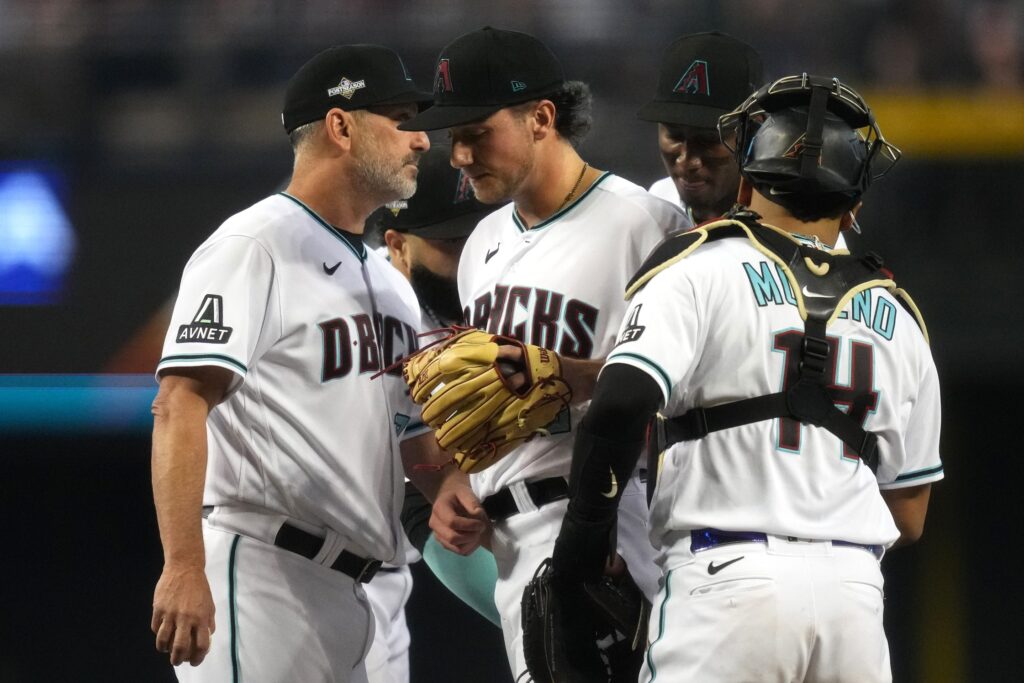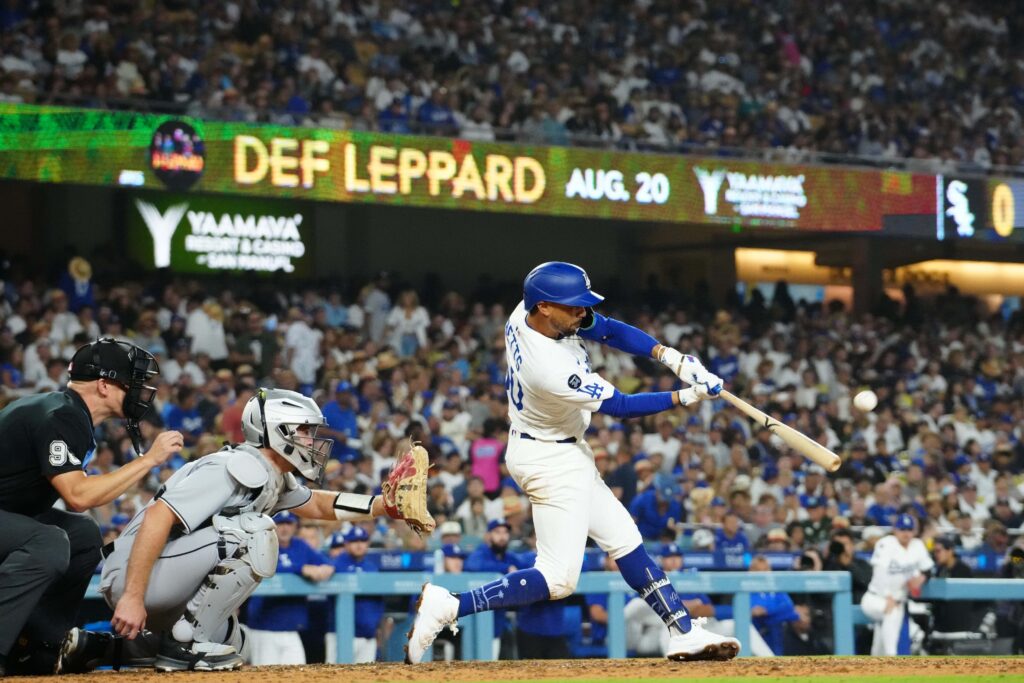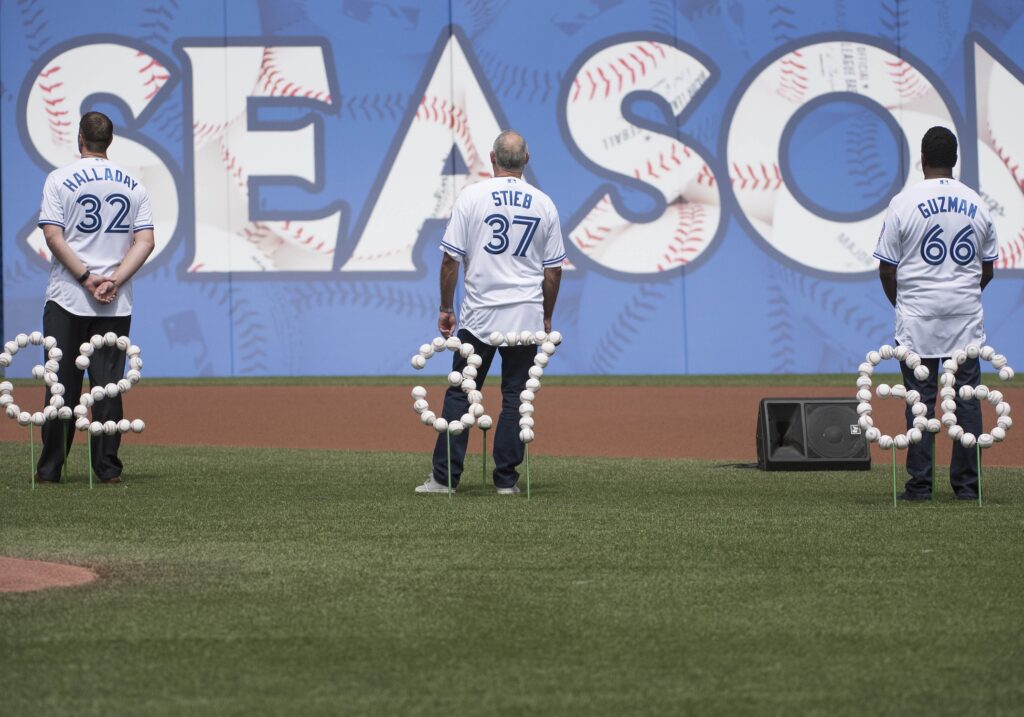It’s time for October baseball, meaning everything that happens during games is put under a microscope. This includes the decisions made by managers. Decisions on whether or not to pull the starting pitcher and go to the bullpen or whether or not to pinch hit are dissected more thoroughly in the postseason than at any other point. Key postseason pitching changes have been a theme in 2023 with some managers being criticized for their quick hooks and others potentially losing games because they rode with their guy for just a little too long.
These pitching changes (or lack thereof) are often extremely consequential and are seen as directly responsible for the results of games so when one doesn’t work out fans are usually pretty upset. Perhaps the most famous example is of Blake Snell in Game 6 of the 2020 World Series with the analytically driven Tampa Bay Rays when he was pulled after dominating for 5.1 innings and just 73 pitches.
It seems that since that game every time a starter who is dealing is pulled early, especially when it doesn’t work out, people blame analytics or say the manager didn’t take into account the human element. Fans and media always give credit to managers when they go with their gut and it works and they always complain about analytics-based decisions when they backfire but they rarely say it’s the reverse. Hopefully, this can make things a little clearer, here is the explanation and assessment of three of these playoffs’ most impactful pitching changes.
Three Biggest Postseason Pitching Changes Explained
Game 2 ALWC Series, Twins vs Blue Jays: Jose Berrios
This is likely the most controversial pitching change of 2023. Jose Berrios was dealing through three innings and just 47 pitches against the Minnesota Twins but was pulled for Yusei Kikuchi after walking the leadoff hitter in the bottom of the fourth. Kikuchi came in and immediately allowed two runs that ended up being the difference in the game and in the Toronto Blue Jays‘ season.
At first glance, it seems indefensible to remove one of your best starting pitchers for another, likely worse starting pitcher after letting him face just 12 batters over three innings. After all, he was dealing and all he did was walk the Twins’ best hitter, Royce Lewis. Not a bad outcome considering he hit two home runs in the previous game.
Berrios was pitching incredibly well, everyone knew he was pitching well including the Jays’ manager and there was no fatigue as Berrios had only thrown 47 pitches. The reason John Schneider and the Jays made the move to bring in Kikuchi is because Kikuchi is a lefty and the thought was that his coming into the game would force the Twins to pinch hit for some of their top lefty bats.
Analysis
An alternative strategy could have been to let Berrios go five or six innings then bring in the lefty Kikuchi to finish the game. That way, you get some of those lefty bats out of the game in the later innings, save the bullpen, and get a lot out of a starting pitcher who was dealing. That plan would make sense but that is not what was done. Instead, Berrios was lifted after three innings only for Kikuchi to throw just 1 2/3, leaving three right-handed relievers to cover the final three innings.
The rationale behind the strategy makes sense, if you can get some of the righty-killing lefties out of the lineup like Edouard Julien, Max Kepler, Alex Kirilloff, and Matt Wallner and replace them with worse right-handed pinch hitters you can weaken the lineup in the games late innings. Especially if you need to use a high-leverage righty like Jordan Romano or Jordan Hicks. The way it was executed did not work that way as only two of those players were pinch hit for and Kikuchi didn’t go deep into the game at all.
The main reason this decision was controversial was obviously because the Jays lost, however, the bullpen only allowed two runs after Berrios departed which most would consider a very successful bullpen game. As well, blaming the analytics department for this decision is not accurate, this is simply the case of a team over-managing and trying to get a little too cute with their pitching staff.
Game 3 NLDS Dodgers at Diamondbacks: Lance Lynn
Lance Lynn had a strange season in 2023. With the White Sox, he was possibly the worst starting pitcher in MLB but after being traded to the Dodgers he seemed to have found what made him so good. Then he lost it again after a few starts. Despite that shakiness though, the Dodgers tabbed him as their starter in their do-or-die Game 3 against the Diamondbacks in the NLDS.
The Dodgers lost that game and as a result the series in part due to the performance from Lynn who allowed four solo home runs in the third inning. The question here is more about a pitching change that wasn’t rather than the pitching change that was.
Lynn got through the first two innings with relative ease, going into the third having only thrown 28 pitches but then things started to go off the rails. Geraldo Perdomo, who only hit six home runs during the entire regular season, led off the inning with a solo shot, then after Corbin Carroll grounded out, Ketel Marte added a solo blast of his own.
At this point, Dodgers manager Dave Roberts decided to leave Lynn in the game to face the middle of the order down 2-0 in an elimination game. So after the next hitter grounds out Lynn allowed back-to-back solo shots from Christian Walker and Gabriel Moreno. It is at this point, down 4-0 and playing for their season, that Roberts decides to lift Lynn from the game and go to the bullpen.
Analysis
Firstly, the Dodgers are down 2-0 in the series and are in danger of being swept by a team they crushed in the regular season. Second, nobody in MLB allowed more home runs this season than Lynn so it wasn’t unpredictable that he allowed a bunch of homers. Lastly, with an off day the day before the Dodgers had a full bullpen available for this game. That’s the situation that the Dodgers are working within this game.
After Lynn allows a home run to the light-hitting shortstop in the ninth spot in the order, someone in the fully rested Dodger bullpen should be warming up and the coaching staff should be on high alert for the rest of the inning. Once he allows the second home run whoever was throwing should be ready and that would be the time for the manager to get Lynn out of the game.
The Dodgers thought the home runs were a fluke and unlikely to persist. An idea that makes sense in theory since home runs are usually just the result of one bad pitch. However, with the pitcher who allows more home runs than anyone on the mound, it should be taken as more of a sign of things to come.
Additionally, Lance Lynn is a swing-and-miss pitcher who racks up strikeouts, amassing 191 strikeouts with a high whiff rate. The fact that Lynn had only gotten one strikeout in 11 batters with just four swings and misses over 21 swings should have shown that he either didn’t have his best stuff or the hitters were just seeing him well.
Either way, all of this should have been enough information for Roberts to make the move but he decided it wasn’t and he let him work his way out of it. This didn’t work and the Dodgers ended up being sent home in part due to this strategic mistake. However because he stuck with his guy rather than making the early move, Roberts’ decision seems to have escaped the criticism of Schneider’s early pull of Berrios despite both being equally egregious.
Game 3 NLCS Phillies at Diamondbacks: Brandon Pfaadt
In what was perhaps the least popular managerial decision of 2023, Diamondbacks’ manager Torey Lovullo pulled rookie pitcher Brandon Pfaadt 5 2/3 innings into the game of his life. It was so unpopular in fact that Lovullo was met with boos as he walked from the dugout to the mound to make the move.
The move was so unpopular because, in those 5 2/3 shutout innings, Pfaadt allowed just two hits and no walks while striking out nine Phillies hitters. The fans’ frustration was compounded by the fact that he had retired 10 straight to finish his outing and had only thrown 70 pitches.
Pfaadt had faced exactly 18 batters which meant he was about to start the third time through the order, something the Diamondbacks staff decided pre-game they didn’t want him to do. While this decision goes against old-school baseball thinking and may look to some like Lovullo was just blindly following analytics, it was more complicated than that.
Analysis
Pfaadt is a young rookie pitcher so he does need to be treated a little differently than more established guys on the roster like Zac Gallen or Merrill Kelly. Pfaadt only threw 96 innings this season and wasn’t overly effective with a 5.72 ERA. He also isn’t as accustomed to going deep into games having only pitched six innings in four of his 19 starts in the regular season.
As well, the key factor for the Diamondbacks when making this decision was him taking a third trip through the mighty Phillies order. Pfaadt, like many starting pitchers, gets significantly worse with each trip through the lineup. The first time through the lineup his opponent’s OPS is .703, the second time is .859 and the third time is 1.193. He was definitely pitching better than all three of those numbers but that is still a significant drop-off after two trips. Additionally, he had thrown 70 pitches, and after 75 pitches his opponent’s OPS balloons to 1.232 (from .895 from pitches 51-75).
While those numbers don’t necessarily reflect how well he was pitching that particular night and they are based on some small samples, they still reflect what his tendencies were throughout nearly 100 innings this season. Knowing this and knowing the fact that the top of the Phillies order consists of Kyle Schwarber, Trea Turner, and Bryce Harper should be enough to show that this decision made a lot of sense.
While people didn’t (and still don’t) like it, Lovullo made the right decision here. Even considering the more intangible factors like the relief of the hitters when he got pulled and the Phillies hitters seeing their best relievers too much throughout the series, it was still a good call by Lovullo.
It worked out pretty well too, the game was tied at zero when Pfaadt was pulled and the bullpen only allowed one run over the next 3 1/3 innings on a wild pitch by Ryan Thompson. The Diamondbacks won the game 2-1 on a walk-off single by Ketel Marte and kept themselves in the series.
Overall, while fans may complain about analytics influencing too many pitching decisions that backfire, the truth is these tactical errors are made for several reasons and not necessarily because a guy from the front office with a spreadsheet told an MLB manager what to do. It is also important to evaluate these decisions without basing them on the result of the game but teams don’t know what’s going to happen before making their decision, they just have to do what they think gives them the best chance to win based on the information they have.
Main Image: Joe Rondone/The Republic / USA TODAY NETWORK



